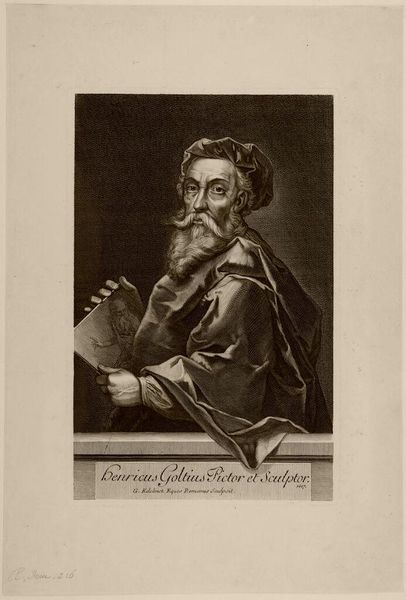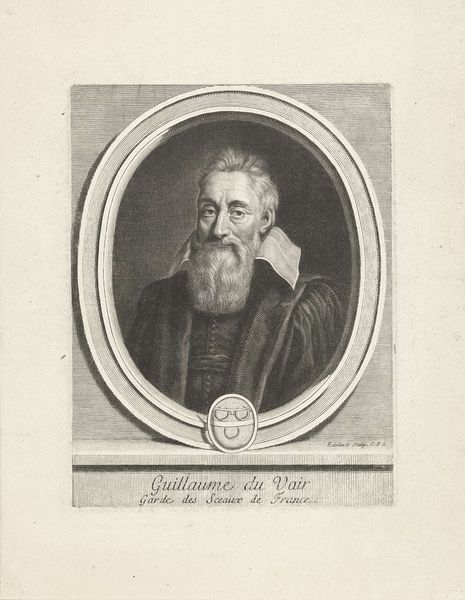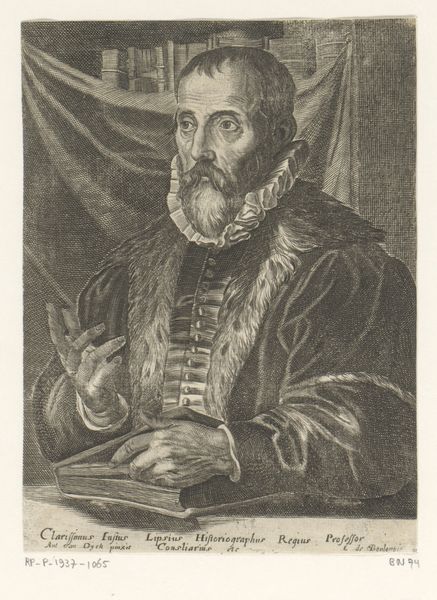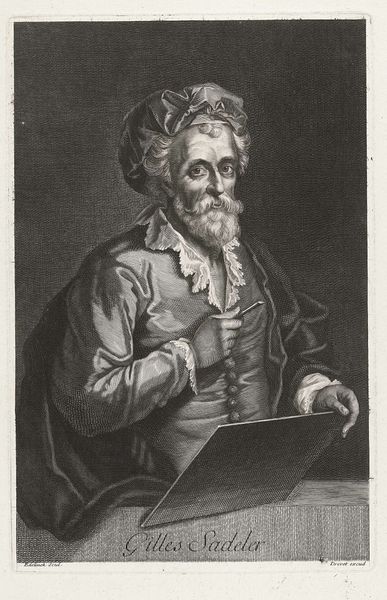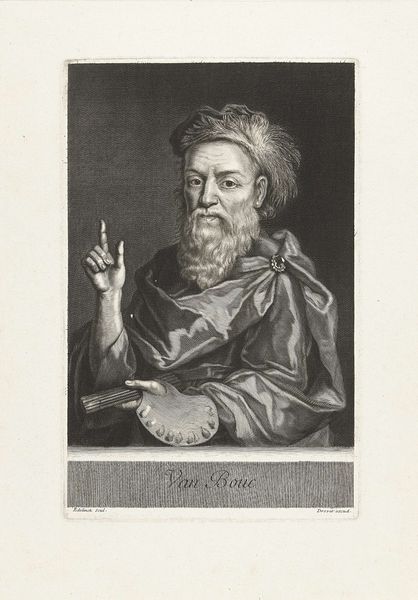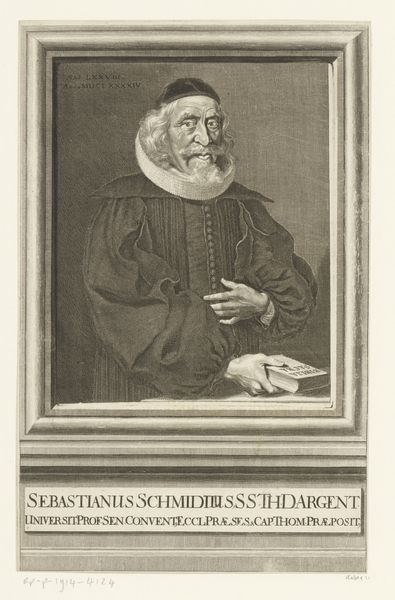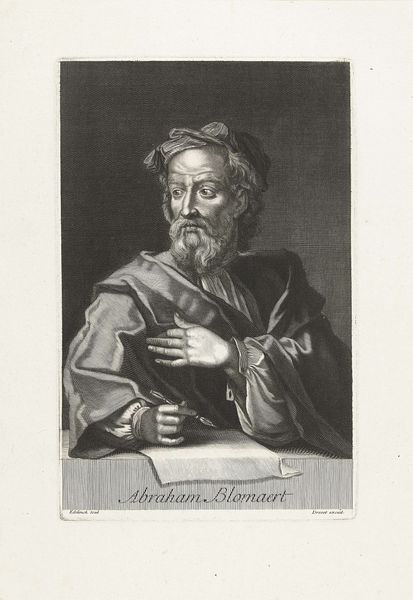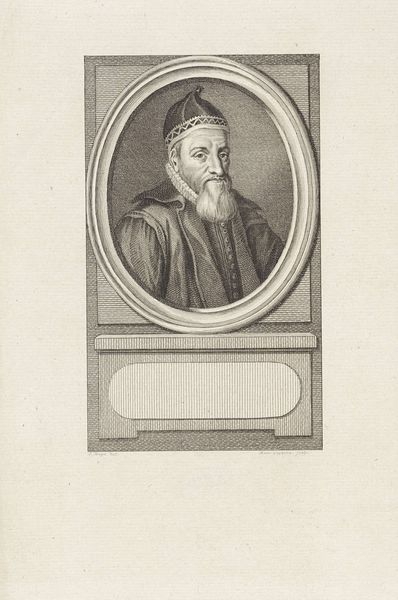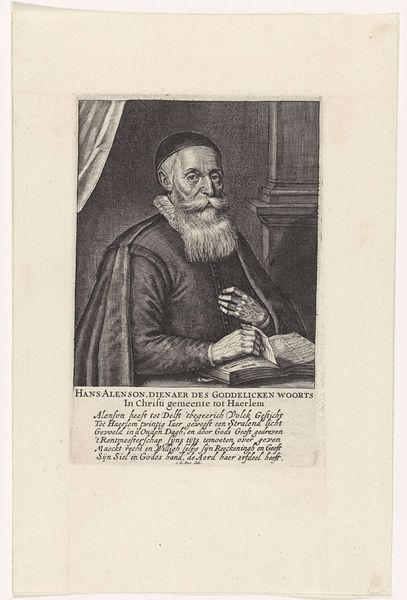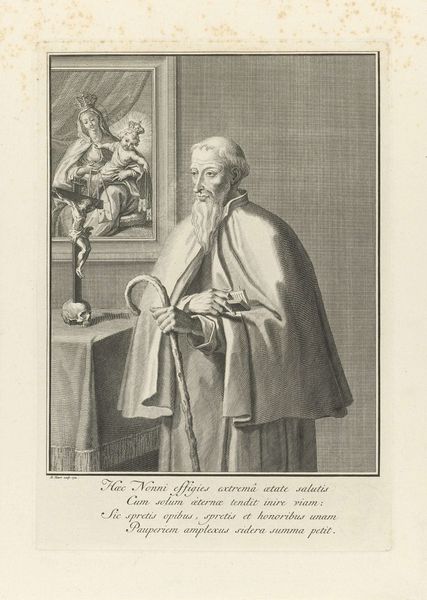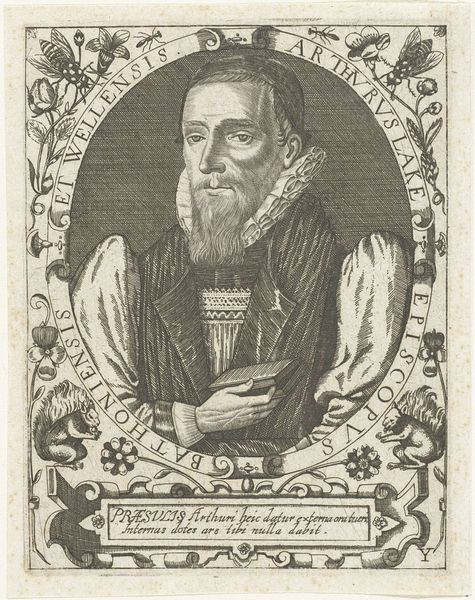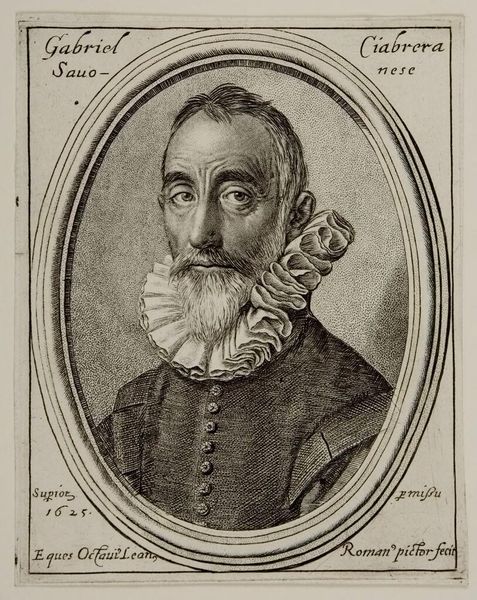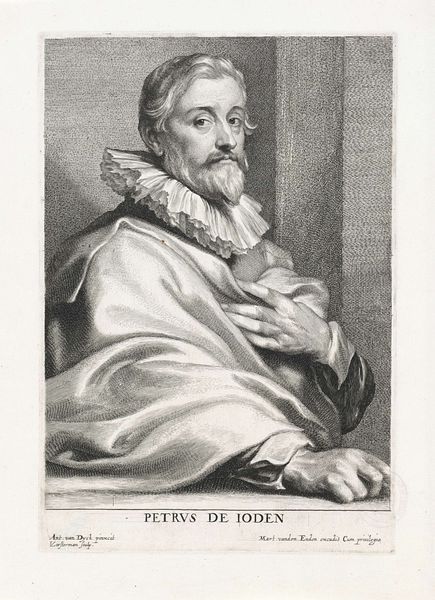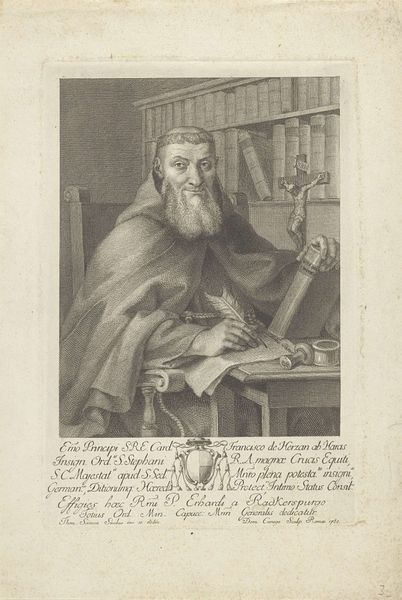
print, paper, engraving
#
portrait
#
baroque
# print
#
paper
#
engraving
#
realism
Dimensions: height 321 mm, width 210 mm
Copyright: Rijks Museum: Open Domain
Curator: This is a compelling piece. At first glance, the baroque styling conveys so much weight, so much seriousness. Is that deliberate gravitas, or something else? Editor: Let's delve into the context. This artwork, a print created with engraving on paper, is titled "Portret van Hendrick Goltzius." It was crafted sometime between 1652 and 1707 and it's now housed here at the Rijksmuseum. Its creator was Gėrard Edelinck. Given what was happening historically, what stories is it trying to tell? Curator: Considering the period, the emphasis on realism aligns with a desire for accurate representation. Yet, the baroque style—the dramatic lighting and rich textures of his garments—suggests something beyond mere replication. There's an attempt to imbue Goltzius with authority and importance, reflective of the societal hierarchies and the elevated status artists aspired to at that time. But this rendering doesn't flatten to only communicate the "who", right? There are more radical interpretations here. Editor: Indeed, the politics of portraiture are at play here. It’s about image-making and controlling narratives. Depicting Goltzius, “pictor et sculptor” as the inscription proclaims, served to elevate both the sitter and the artistic profession. But I think that is a traditionally restrictive reading. This also could show some measure of the real conditions surrounding being a creator in the visual medium at this period. Is Goltzius rendered as almost hidden away within those large billows of heavy material? What about the fact that his own hands (tools for creation) grasp, arguably feebly, at a simple work? Is it simply respect that’s the theme, or does it suggest also that creation can also burden its creators, and trap them in repetitive expectations? Curator: That's an intriguing read on that specific work shown in the print and on the visual representation itself. It prompts us to reflect on power dynamics within artistic circles, how self-portraits like these negotiate visibility, but perhaps also reveal vulnerabilities. He isn't shown working per se, yet also the simple, relatively unfinished and understated work hints at labor. It pushes back against a purely celebratory view. It feels very revealing about artistic personhood at that point. Editor: Precisely! It's in these tensions between the social role of art, individual expression, and our ever evolving understandings that new narratives start to emerge and challenge older, stuffier ones. Curator: That tension seems palpable. These dialogues, revisiting and critiquing established perspectives, constantly rejuvenate our encounter with such artwork, pushing for contemporary relevance.
Comments
No comments
Be the first to comment and join the conversation on the ultimate creative platform.
